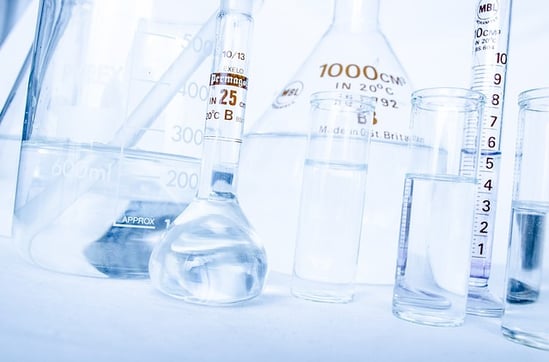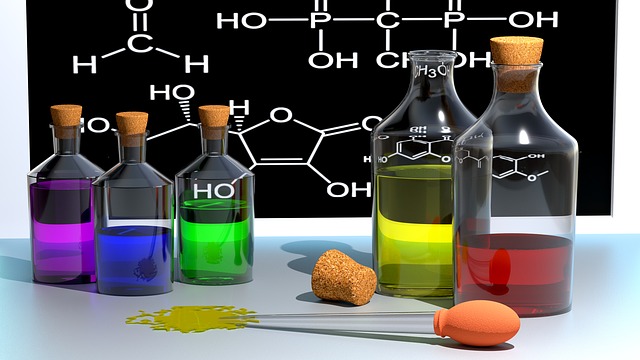How to Balance Equations the Easy Way
A chemical equation tells you what happens during a chemical reaction. A balanced chemical equation has the correct number of reactants and products to satisfy the Law of Conservation of Mass. In this article, we'll talk about what a chemical equation is, how to balance chemical equations, and give you some examples to aid in your balancing chemical equations practice. Simply put, a chemical equation tells you what's happening in a chemical reaction. Here's what a chemical equation looks like: Fe + O2 → Fe2O3 On the left side of the equation are the reactants. These are the materials that you start with in a chemical reaction. On the right side of the equation are the products. The products are the substances that are made as a result of a chemical reaction. In order for a chemical reaction to be correct, it needs to satisfy something called the Law of Conservation of Mass, which states that mass can't be created or destroyed during a chemical reaction. That means that each side of the chemical equation needs to have the same amount of mass, because the amount of mass can't be changed. If your chemical equation has different masses on the left and right side of the equation, you'll need to balance your chemical equation. Balancing chemical equations means that you write the chemical equation correctly so that there is the same amount of mass on each side of the arrow. In this section, we're going to explain how to balance a chemical equation by using a real life example, the chemical equation that occurs when iron rusts: Fe + O2 → Fe2O3 The first step in balancing a chemical equation is to identify your reactants and your products. Remember, your reactants are on the left side of your equation. The products are on the right side. For this equation, our reactants are Fe andO 2. Our products areFe 2 and O3. Next, you need to determine how many atoms of each element are present on each side of the equation. You can do this by looking at the subscripts or the coefficients. If there is no subscript or coefficient present, then you just have one atom of something. Fe + O 2 → Fe 2 O 3 On the reactant side, we have one atom of iron and two atoms of oxygen. On the product side, we have two atoms of iron and three atoms of oxygen. When you write out the number of products, you can see that the equation isn't balanced, because there are different amounts of each atom on the reactant side and the product side. That means we need to add coefficients to make this equation balanced. Earlier, I mentioned that there are two ways to tell how many atoms of a particular element exist in a chemical equation: by looking at the subscripts and looking at the coefficients. When you balance a chemical equation, you change coefficients. You never change subscripts. A coefficient is a whole number multiplier. To balance a chemical equation, you add these whole number multipliers (coefficients) to make sure that there are the same number of atoms on each side of the arrow. Here's something important to remember about coefficients: they apply to every part of a product. For instance, take the chemical equation for water: H2O. If you added a coefficient to make it 2H2O, then the coefficient multiples across all of the elements present. So, 2H2O means that you have four atoms of hydrogen and two atoms of oxygen. You don't just multiply against the first element present. So, in our chemical equation (Fe + O 2 → Fe 2 O 3), any coefficient you add to the product has to be reflected with the reactants. Let's look at how to balance this chemical equation. On the product side, we have two atoms of iron and three atoms of oxygen. Let's tackle iron first. When first looking at this chemical equation you might think that something like this works: 2Fe + O 2 → Fe 2 O 3 While that balances out the iron atoms (leaving two on each side), oxygen is still unbalanced. That means we need to keep looking. Taking iron first, we know that we'll be working with a multiple of two, since there are two atoms of iron present on the product side. Knowing that using two as a coefficient won't work, let's try the next multiple of two: four. 4Fe + O 2 → 2Fe 2 O 3 That creates balance for iron by having four atoms on each side of the equation. Oxygen isn't quite balanced yet, but on the product side we have six atoms of oxygen. Six is a multiple of two, so we can work with that on the reactant side, where two atoms of oxygen are present. That means that we can write our balanced chemical equation this way: 4Fe + 3O 2 → 3Fe 2 O 3 There are many places you can do balancing chemical equations practice online. Here are a few places with practice problems you can use: Balancing chemical equations seems complicated, but it's really not that hard! Your main goal when balancing chemical equations is to make sure that there are the same amount of reactants and products on each side of the chemical equation arrow. Looking for more chemistry guides ? We have articles that go over six physical and chemical change examples, the 11 solubility rules, and the solubility constant (K sp ), as well as info info on AP Chem, IB Chemistry, and Regents Chemistry. Writing a research paper for school but not sure what to write about? Our guide to research paper topics has over 100 topics in ten categories so you can be sure to find the perfect topic for you. Want to know the fastest and easiest ways to convert between Fahrenheit and Celsius? We've got you covered! Check out our guide to the best ways to convert Celsius to Fahrenheit (or vice versa). Are you studying clouds in your science class?Get help identifying the different types of clouds with our expert guide. Need more help with this topic? Check out Tutorbase! Our vetted tutor database includes a range of experienced educators who can help you polish an essay for English or explain how derivatives work for Calculus. You can use dozens of filters and search criteria to find the perfect person for your needs. 
What Is a Chemical Equation?
How to Balance Chemical Equations—Explanation and Example

#1: Identify the Products and Reactants
#2: Write the Number of Atoms
#3: Add Coefficients

3 Great Sources of Balancing Chemical Equations Practice
Balancing Chemical Equations: Key Takeaways
What's Next?


About the Author
Hayley Milliman is a former teacher turned writer who blogs about education, history, and technology. When she was a teacher, Hayley's students regularly scored in the 99th percentile thanks to her passion for making topics digestible and accessible. In addition to her work for PrepScholar, Hayley is the author of Museum Hack's Guide to History's Fiercest Females.
Source: https://blog.prepscholar.com/balancing-chemical-equations
0 Response to "How to Balance Equations the Easy Way"
Post a Comment